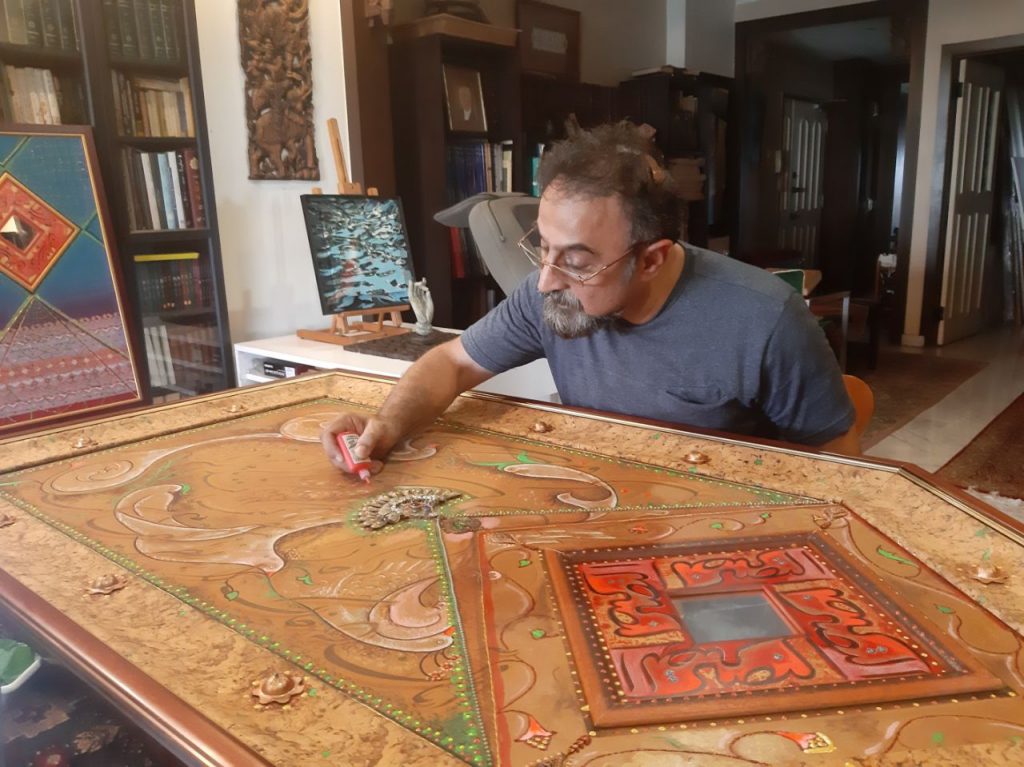
By V. Sankara
KUALA LUMPUR, Oct 23 (NNN-BERNAMA) — Art spreads beyond political boundaries and geographical territories in a subtle manner, and it has been the most effective medium of expression and communication throughout history, says an Iranian art historian and Indologist based in Malaysia.
Prof Dr Amir H. Zekrgoo, who has been producing artworks for over 40 years, believes that “artists are our true cultural ambassadors, and by facilitating their trans-national interaction, will help promote peace and fraternity.”
“Art gives validity to a civilisation…no matter how advanced in technology, cannot be called ‘civilisation’ if it does not produce and leave behind high art.
“No doubt even the highest civilisations had dark ages…art even records the darkest phases of human history in the most vivid and effective manner,” he told Bernama in an exclusive interview when met at his residence, here, recently.
The 63-year-old established painter and imaginative photographer said he had lived some 40 years in the Western, Eastern and Islamic countries, and felt blessed for having experiences of witnessing such a beautiful diversity besides getting to know their rich and diverse offerings.
Zekrgoo, a Professorial Fellow of Middle Eastern Manuscripts at Melbourne University and former Professor of Islamic and Oriental Arts at the International Institute of Islamic Thought and Civilisation (ISTAC), IIUM, has worked extensively on Islamic Manuscripts besides emphasising on the importance of Jawi manuscripts as a shared Southeast Asian Heritage.
“The illuminated historical letters and manuscripts that are written in the Jawi script and decorated with elements that reflect regional aesthetic values are hidden treasures within the Islamic heritage.
“The disconnection of the new generation from their rich historical heritage due to the inability to read them is regretful,” he said, adding he had always included images of Jawi in his lectures on History of Islamic Art at ISTAC.
Asked how Malaysia influenced and impacted his artworks, Zekrgoo – who has been residing in Kuala Lumpur with his family for over 20 years – said Malaysia impacted his artwork by influencing his thought and aesthetic sense to a certain extent where he had produced most of his calligraphic artworks in the country.
“Art is a very slow process and I am sure when Malaysia impacted my life in the past two decades, it did impact my artworks.
“Some friends who visited my studio say they felt the influence of local aesthetics in the choice of colours and patterns,” he added.
Zekrgoo, who is an expert in comparative studies in religious and sacred arts, said he is in the midst of translating the Ramayana, one of the major Sanskrit epics of ancient India, into Persian language.
The scholar, who had lived in India for almost 10 years and is well-versed in Hindi, has produced 16 books and over 100 published articles in Persian, English and Urdu.
— BERNAMA
